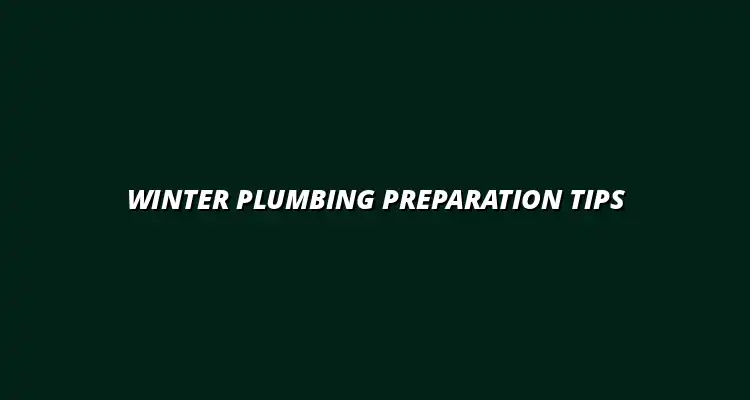
- Beginner Tips
- Jan 10
2025-01-06
As the temperatures drop, winterizing your plumbing system becomes crucial. Neglecting this essential step can lead to significant issues, including burst pipes and costly repairs. Taking the time to prepare your plumbing not only saves you headaches but also protects your home and finances.
When cold weather strikes, water inside pipes can freeze, expand, and cause serious damage. This is especially true for exposed pipes in unheated areas like basements, attics, and crawl spaces. By understanding the importance of winterizing your plumbing, you're taking a proactive approach to prevent these damaging issues. For more tips on preventing freezing pipes in your kitchen, check out these winter plumbing tips.
Failing to winterize your plumbing system can result in a range of problems. Common risks include:
Understanding these risks can motivate homeowners to take the necessary steps to protect their plumbing systems. It’s always better to be safe than sorry when it comes to preparing for winter!
Some common winter plumbing issues include:
These issues can create a cascade of problems, so addressing them before winter hits is crucial. By being informed about these common plumbing challenges, you can take steps to avoid them.
When plumbing failures occur due to neglect, the financial implications can be steep. Not only do you face immediate repair costs, but you might also incur expenses related to:
Investing time and effort into winterizing your plumbing can save you from these costly surprises later on. Being proactive is the best way to protect your home and your wallet! Regular maintenance, including an annual water heater inspection, is key.
Winterizing your plumbing involves several key steps to ensure everything runs smoothly during the colder months. Taking these steps seriously will help you avoid many plumbing disasters. Here’s a quick overview of what you need to do:
By following these steps, you can protect your plumbing system from winter's icy grip and enjoy peace of mind, knowing you’ve done your part! Having the right essential plumbing tools can also help.
Detecting frozen pipes is essential to prevent further damage. Common signs include a lack of water flow, unusual sounds when turning on faucets, or frost forming on the exterior of the pipes. If you suspect your pipes may be frozen, act quickly to resolve the issue.
Immediate actions you can take include:
If you find any signs of frozen pipes, it's crucial to consider thawing them carefully. Use a hairdryer or heating pad to gently warm the affected area. Avoid using direct flames, as this could damage the pipes. Knowing how to fix a leaky faucet is another useful skill.
In the unfortunate case of a burst pipe, quick action is vital to minimize damage. First, turn off the water supply to stop the flow. Next, drain the system by opening faucets and flushing toilets to relieve pressure.
Here are some emergency steps to take:
Once the immediate situation is under control, consider preventive measures to avoid future bursts. This may involve better insulation, regular plumbing inspections, and keeping your home heated adequately during cold spells. Preventing leaks in your bathroom is also important; see these tips on winter bathroom plumbing leak prevention.
Regular maintenance of your plumbing system can save you headaches later on. Implementing a routine check-up can catch potential issues before they escalate into costly repairs. Plus, it helps ensure your plumbing runs efficiently throughout the winter months.
Creating a seasonal plumbing maintenance checklist is an excellent way to stay organized. Consider including the following items:
By consistently following this checklist, you can help protect your plumbing system year-round.
Staying informed about plumbing care is essential for every homeowner. Understanding the common issues and solutions can empower you to take charge of your plumbing system. Plus, it makes handling emergencies less daunting when you know what to do.
To enhance your plumbing knowledge, consider the following resources:
By utilizing these resources, you can ensure that you’re well-equipped to manage your plumbing system effectively, especially during the winter months!
